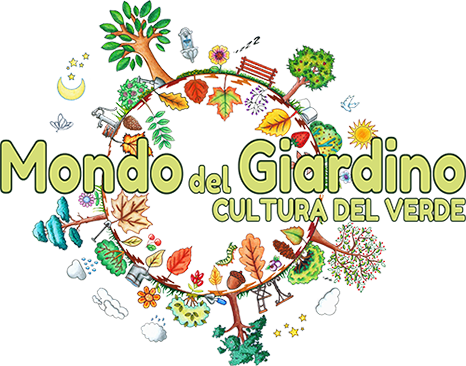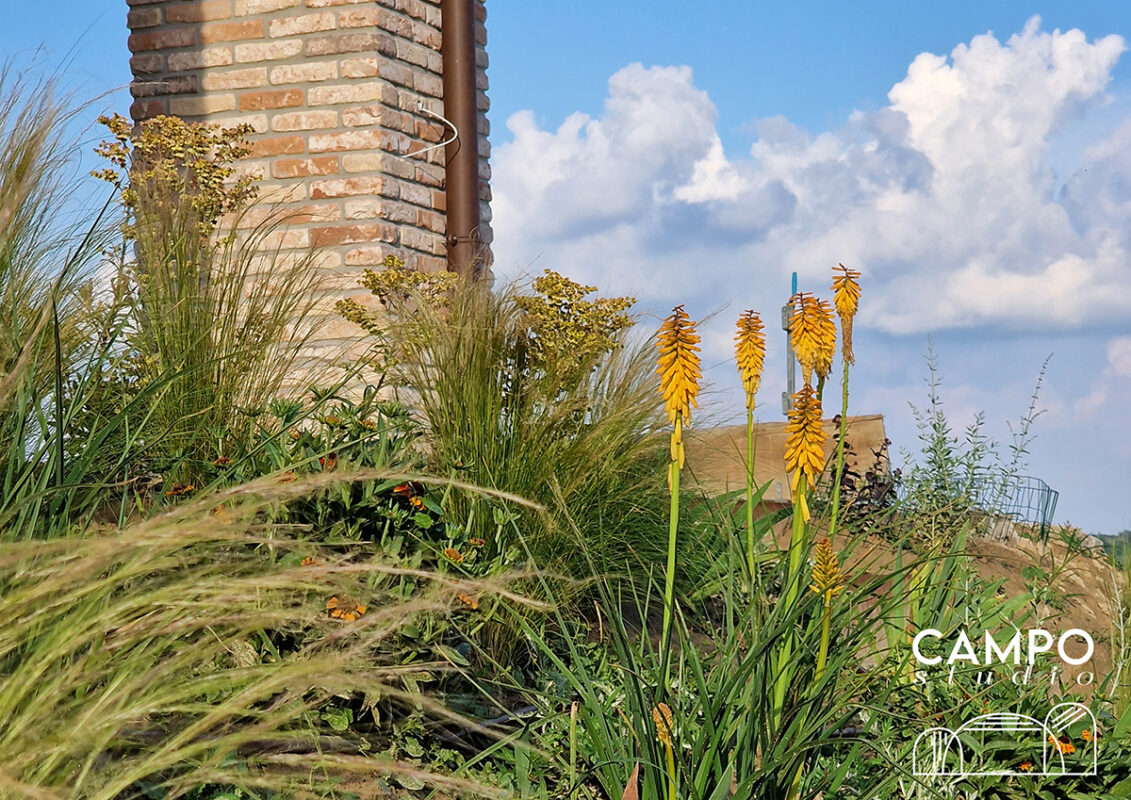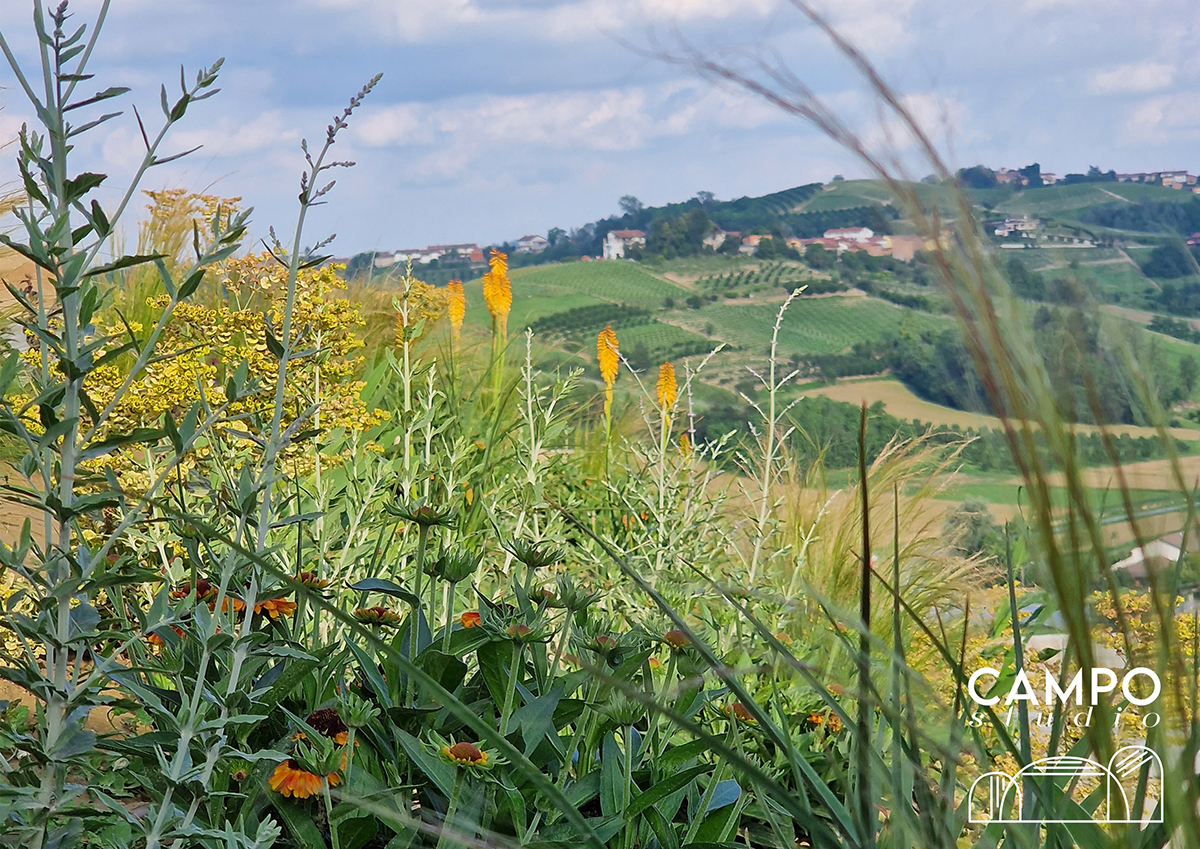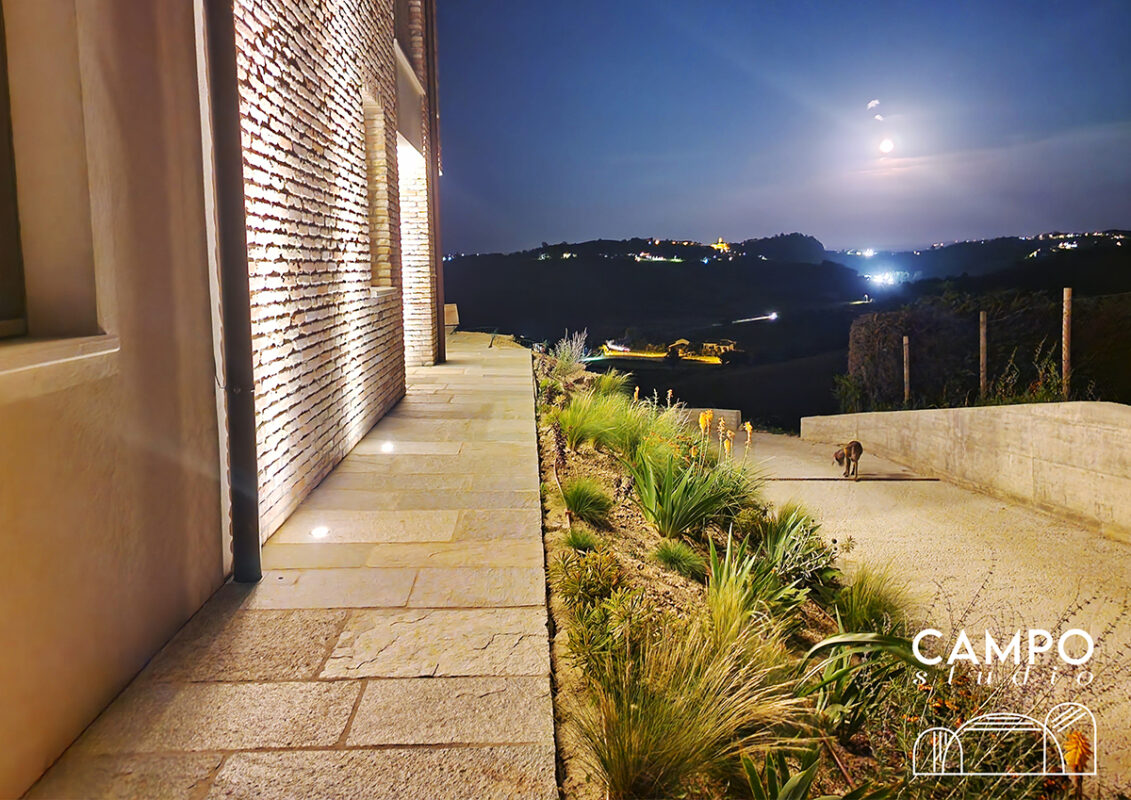Where is this spontaneous garden in the Roero?
Among the hills of the Asti area, in the Terre Alfieri area between the municipalities of San Damiano and Cisterna d’Asti, the landscape has an ancient flavor (from other times we would say here in Piedmont). Large valleys alternate with gentle hills covered with hazelnut groves and small wooded plots.
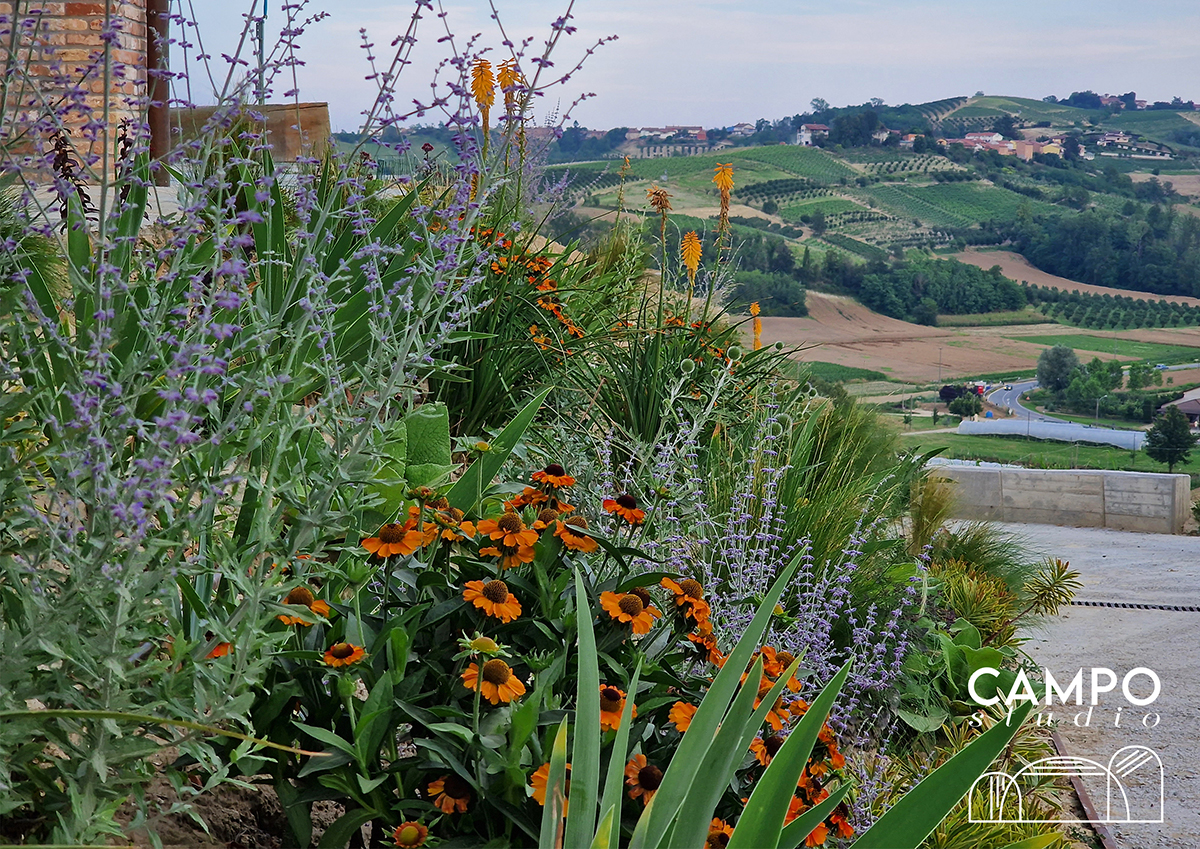
A lot of interest from abroad
Despite its proximity to the well-known Langhe and Roero, this territory does not enjoy the same fame, however its beauty has not escaped many, in particular the Dutch and Americans who in recent years have bought numerous properties to be able to spend long periods of year in the quiet of lower Piedmont.
A spontaneous garden in Roero:
The Designers
In this context, inside an old farmhouse renovated for residential purposes, the duo formed by the architect Monica Novara and the landscape architect Michele Boaretti with the name of Campo.Studio, found themselves working on a large garden size characterized by limited flat portions and organized in a successive series of cliffs of land alternating with large earth slopes.
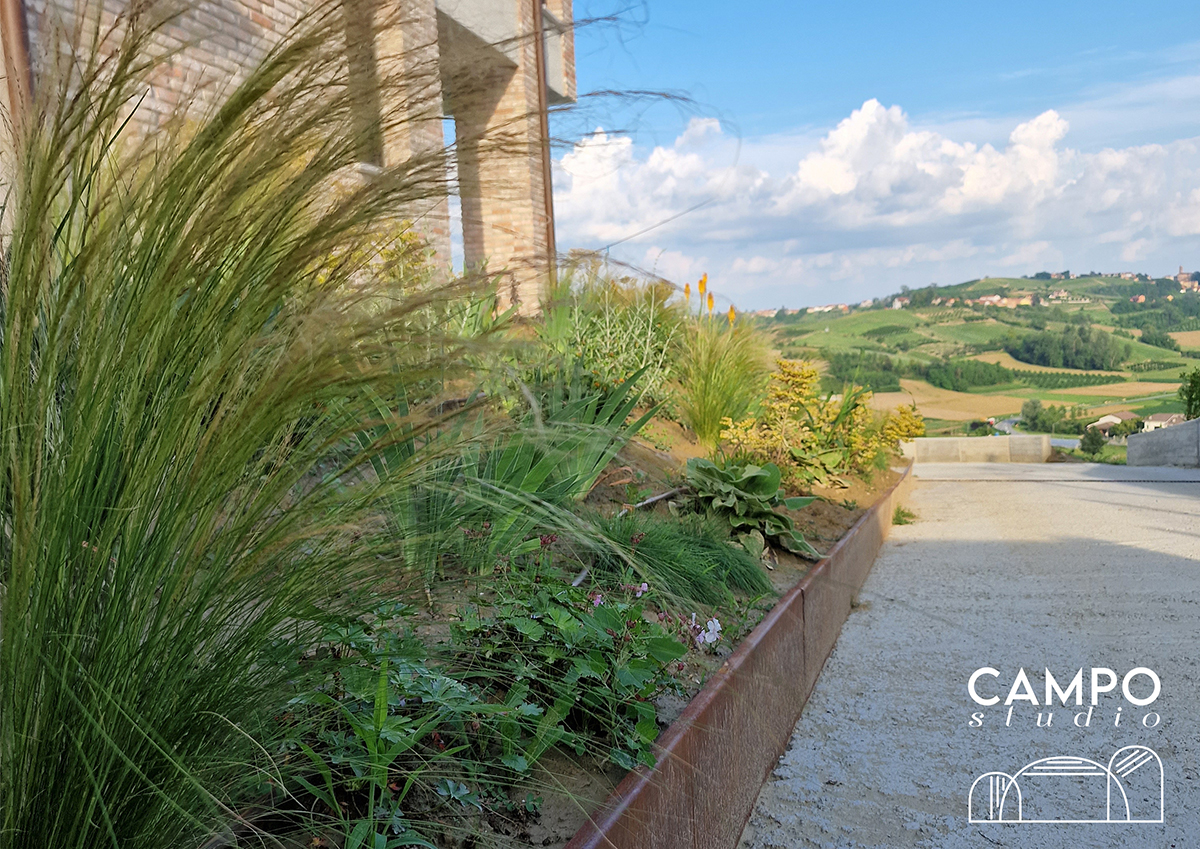
The idea behind the project
The basic idea, by the express will of the owners, was to give life to a series of different atmospheres suited to the collection of plants from different areas of the world, not separated from each other but, on the contrary, put into dialogue thanks to and peaceful ‘vegetable encroachments’ between one environment and another.
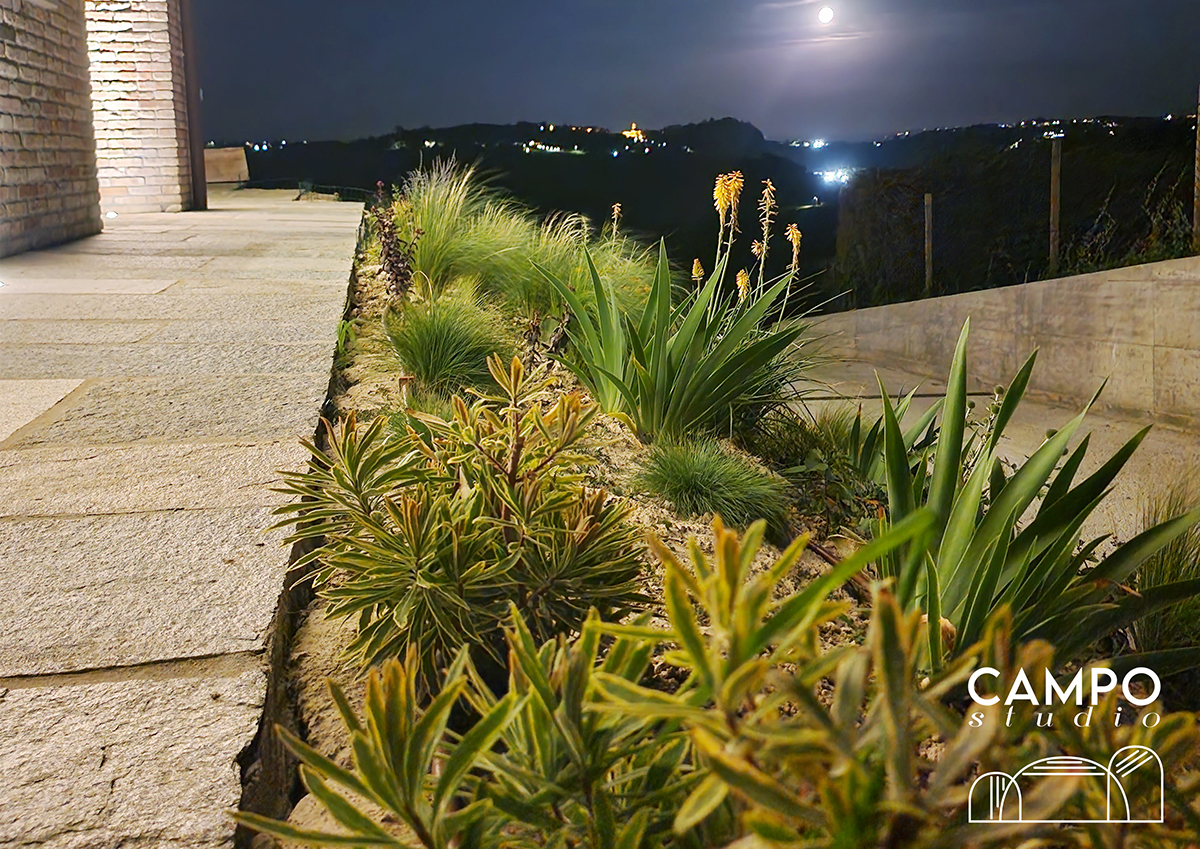
The hurdles to overcome
The theme, although fascinating, immediately highlighted a series of problems of a technical, compositional and ecological nature.
The first element concerned the insertion of the new garden within a consolidated and strongly characterized landscape. The challenge was to insert the new composition harmoniously so as not to seem like an entity detached from the context.
Secondly, due to the climatic dynamics of recent years, the need to make the garden coexist with long dry periods and rapid and abundant rains has come to light, which has strongly influenced the choice of plants.
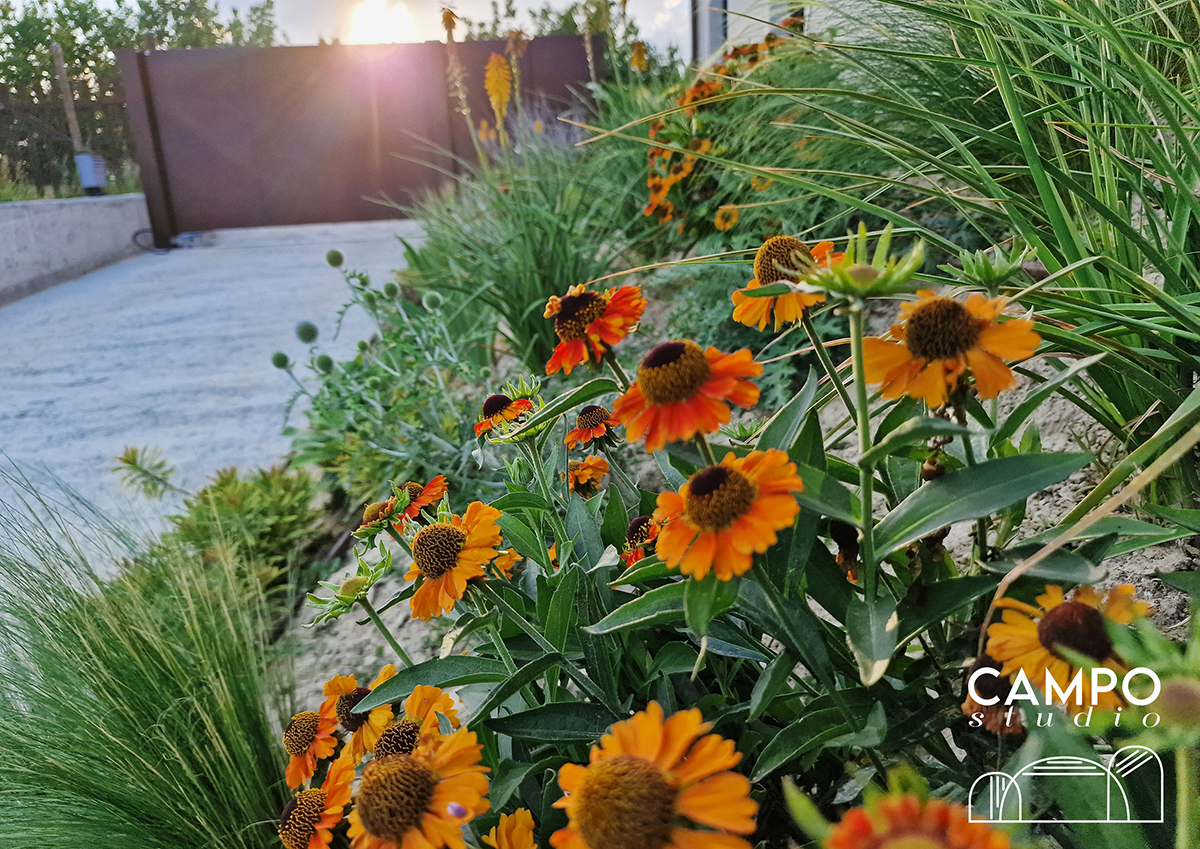
For a spontaneous garden in the Roero:
How were the hurdles overcome?
Due to the vastness of the area, it was decided to build it in lots. The first of which, located near the house, involved a narrow and long earth slope, furrowed in the center by a staircase in Corten steel and stone slabs and finished in the extreme south by a Luserna stone embankment.
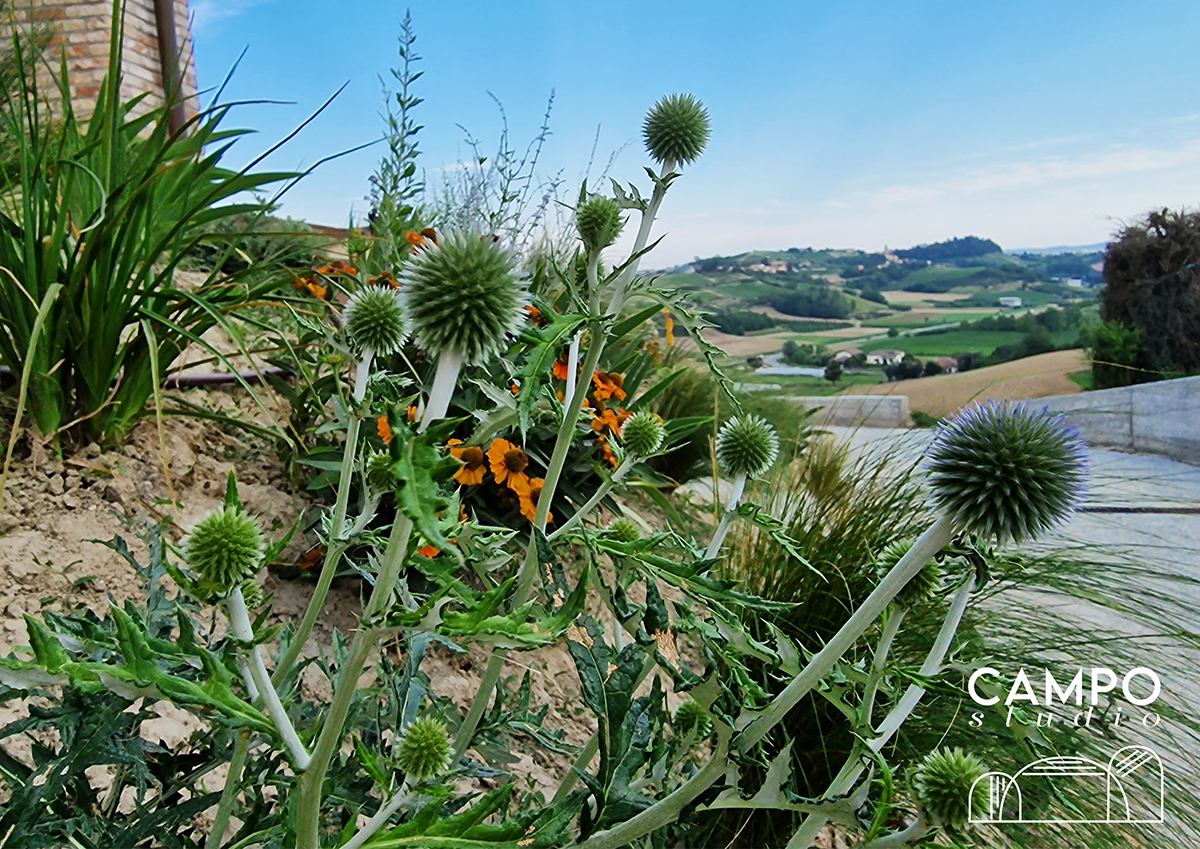
The rules of composition
The composition followed precise scientific rules both for the quantity of plants to be used and for their arrangement, adopting the theories of the ‘New Perennial Movement’ which sees Piet Oudolf, Cassian Schmidt and Nigel Dunnet among the main global exponents.
In this portion of the garden it was decided to create a mixed border with a complex structure, obtained from the combination of numerous varieties of perennial herbaceous plants and flowering bulbous plants, designed to guarantee a continuous alternation of blooms, textures and chromatic variations.
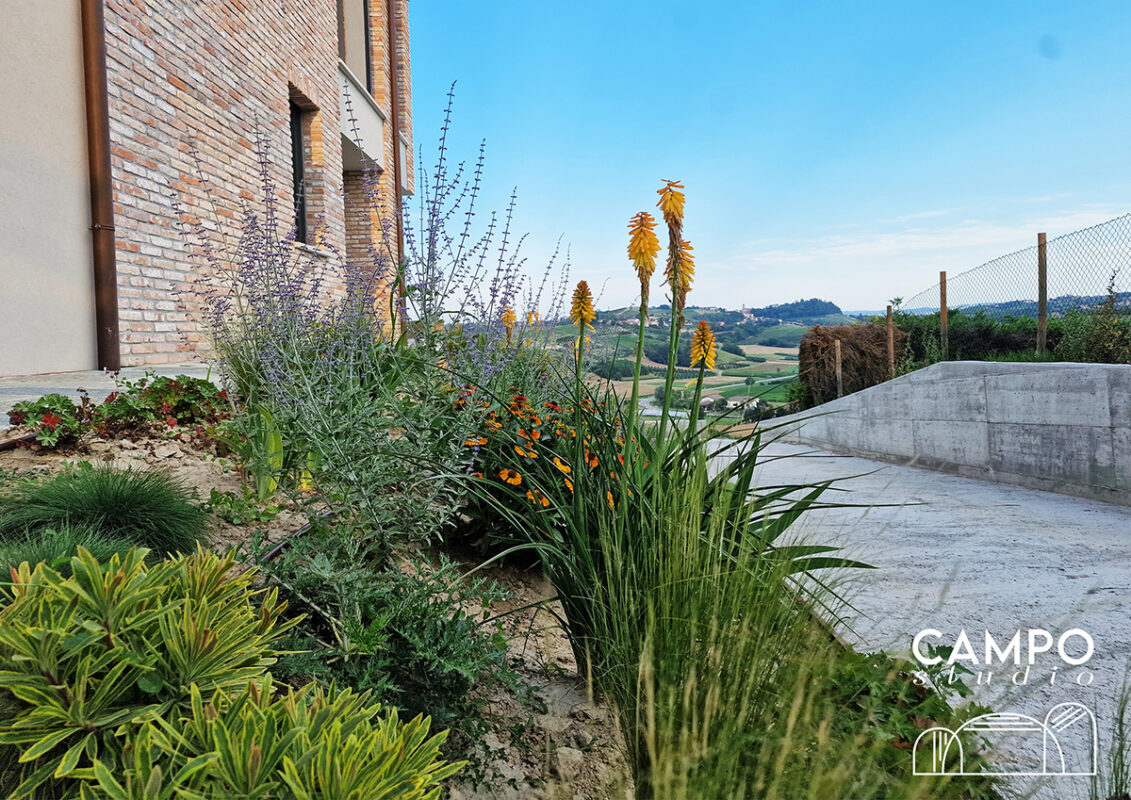
The structural green elements
A non-geometric mesh of plants defined as ‘Structural’ due to their persistence and the discrete stability they present in the growth and tillering phase was therefore prepared. Among these we find the splendid Kniphofia ‘Echo Mango’ with light orange tubular flowers that repeat themselves from May to September and two varieties of grasses such as the Stipa tenuissima with warm and straw-coloured tones and the Festuca amethystina with glaucous foliage, in color contrast with the previous ones .
The green elements that mark the seasons
Subsequently, the border was enriched with plants with greater mobility or whose above-ground structure undergoes decisive transformations according to the seasons, this to give the garden a dynamic component capable of making it always different over time. Among these we find the Helenium and the Phlomis, but also the Euphorbia ‘Ascot Rainbow’ with its splendid variegated foliage and then the Echinops ritro and the Perovskia ‘Little Spire’ carefully following the combination between a majority component of warm colors, combined with notes in contrast in shades of blue-violet.
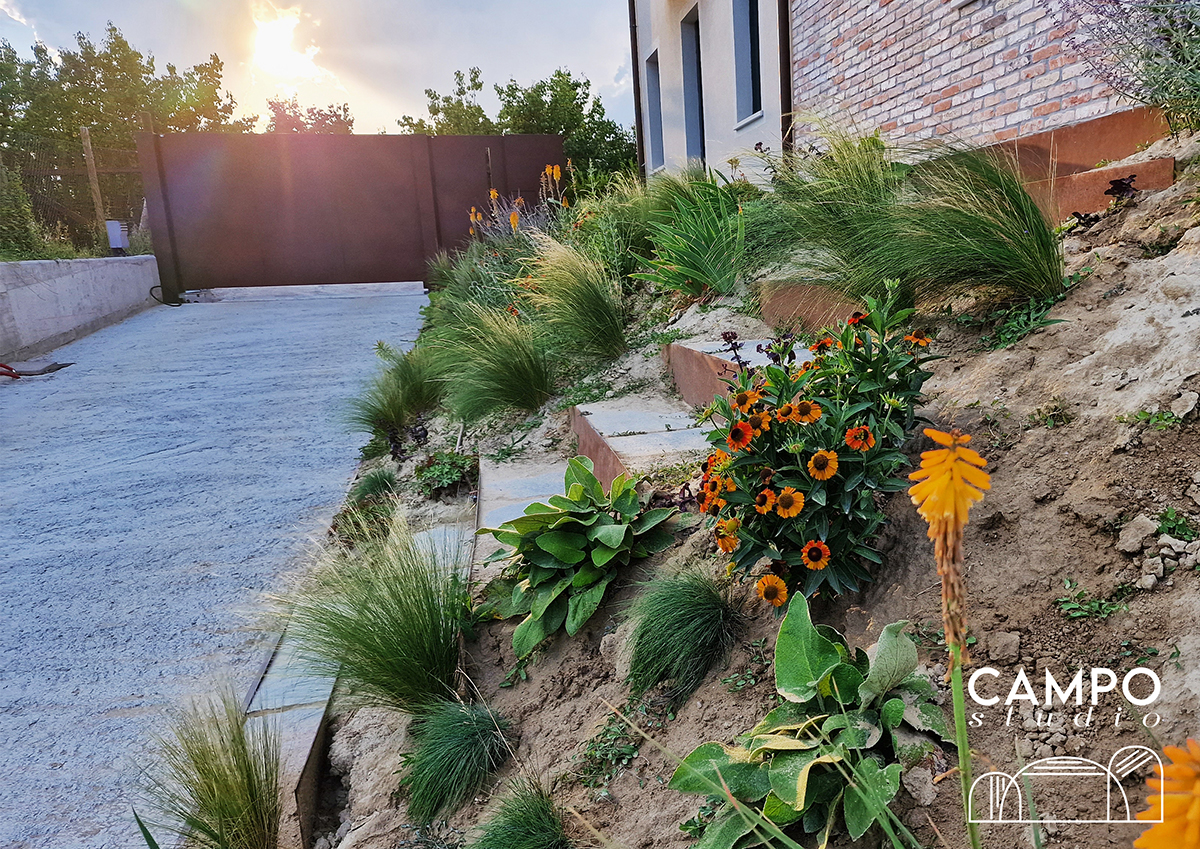
Ground cover plants
The last elements necessary to complete the mixed border are ground cover plants or plants with a considerable tillering capacity. In this case the choice fell on specimens of Geranium ‘Biokovo’ and Sedum ‘Xenox’ characterized by purple-violet foliage. These were joined by two different varieties of Germanic Iris ready to cheer the first heat of May with their corollas.
The visible results of your work
The composition saw the light in the month of April and, despite the late planting, already in the month of June it was possible to appreciate the first splendid and, in some ways unexpected, blooms. The sunlight, the rain and the wind seem to play with the young plants, creating a different picture every day.
the input of Mondo del Giardino
Using perennial herbs for our green space helps us with its bounty of blooms and the planet where we ourselves live. If you want to contact this landscape studio, you can find it in the SHOWCASE
Now on horseback! Work awaits us! Our new wonderful outdoor space is about to be born!
GOOD WORK and … if you have any questions please write to info@mondodelgiardino.com
For the images we thank CampoStudio.
